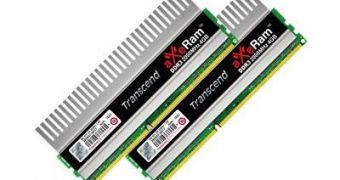DRAM makers may have, at one point, said that they weren't going to let chip prices fall any lower than they already are, but it looks like contract prices went down anyway.
The evolution of things on the semiconductor market, and its individual segments, is one that seems to be showing mixed results lately.
While PC sales have been rising, there doesn't seem to be enough of this phenomenon on the market of DRAM products.
Apparently, even after over six months of weak demand, and repeated price drops, things still haven't improved on the consumers' side.
Memory products are priced at an all time low and one would think users would lunge at the opportunity to buy modules and kits far cheaper than they should be selling for.
Turns out, however, that even with the standard RAM capacity going from 2 GB to 4 GB on both desktops and laptops, demand is still weak.
One would have though that things couldn't have gotten any more complicated back when DRAM makers said they had decided not to let prices slide any lower, oversupply or no.
Unfortunately, it looks like prices fell anyway, according to a recent report made by Digitimes.
Chip producers are getting pressurized to clear their inventories and this has give PC OEMs a better leverage in price negotiations.
Additionally, with OEMs' own inventories piling up in the second quarter of 2011, they have been placing fewer orders.
All in all, this led to 2 GB and 4 GB DDR3 modules falling in price by another 7% after they'd fallen by 6% in June. In other words, they are now going for US$16 and US$31, respectively (prices of 1Gb and 2Gb chips were US$0.84 and US$1.78).
Considering that analysts aren't very optimistic about RAM sales in the short term, it is unlikely that the situation will recover any time soon.

 14 DAY TRIAL //
14 DAY TRIAL //